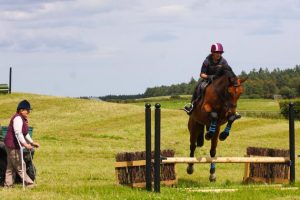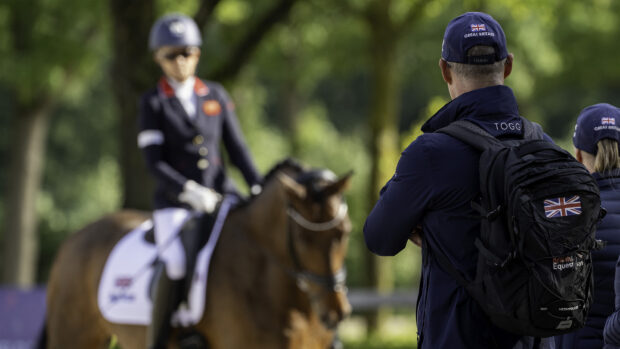In 1971, aged just 20, Clare Molyneux was breaking-in a young showjumping pony when it went over backwards on her, crushing her spine. She spent the following six months in Southport Spinal Unit in Lancashire, completely paralysed from her waist downwards.
“It was not part of my psyche to give-up,” Clare, who is now 63, told H&H. “I never accepted that I wouldn’t walk again.”
Just 12 months after the accident Clare was back on a horse. Within three years she was walking again, had set up her own livery and schooling yard in Lancashire, was hunting and had qualified as a riding instructor.
Her equestrian career was going from strength to strength when in 2006 she suffered another fall, exacerbating her original spinal problem.
Not to be beaten a second time, Clare then spent five months in the Glasgow Spinal Unit trying to learn to walk on calipers and crutches.
On being discharged she took up riding at a Riding for the Disabled Association (RDA) centre — and by 2011 she was representing Great Britain in para dressage.
Here Clare tells H&H about the crucial people, horses and turning points in her recovery:
The importance of having a passion
“Recovery is about having something that you believe in and a passion that means you won’t give up. And my passion was horses. You have to see that it can be done.”
The power of the RDA
“After my first accident there was no RDA and no support system in place for people in my position. You were just sent home and told to get on with your life.
“After the 2006 accident I don’t know if I could have got back on a horse without the RDA — it was immensely important.
“I went to the RDA at the Highland Riding Centre and I was riding before I could walk again. You don’t have the same core strength but I believe there’s so much muscle memory which helps you get back on and know what you’re doing.”
The Back Up Trust’s inspiration
“When I was lying in hospital in Glasgow, the Back Up Trust — a charity supporting people affected by spinal cord injury — was one of the biggest influences in getting me back on my feet.
“They gave me a sense that life does go on after an accident and they will help you get back to where you were before — even if it’s in a different format.
“I went on an activity course with them to the Lake District in 2007 and it gave me the feeling that there were no restrictions. People in wheelchairs were leading the activities — which made it so inspiring. We went up a mountain, abseiling, canoeing and sailing.
“After that I thought: ‘Stop being miserable Clare.’
“It put riding back on the agenda — and once I was riding I started walking again.
“Now I volunteer as a mentor for the charity.”
The horses
“Initially it’s incredibly important to be put on a quiet horse or pony. When you’re paralysed and get on a horse, you don’t have the same core strength and balance. Even if the horse is stationary but they move their head or lift a foot, it can be difficult.
“For a long time walking was the most I could do. But eventually muscle memory kicks in and you start to build your core strength again.
“In time I was able to move on to horses with a more active movement — but it’s a gradual process.”
A gold medal moment
“By 2011 I was representing Great Britain as an individual at the FEI2* international para dressage at Bishop Burton.
“I was 60 at the time and it was a dream come true. That was my gold medal moment.”
If you’ve been inspired by Clare’s story and want to find out more about the Back Up Trust, what they do and how you can donate or fundraise, visit www.backuptrust.org.uk
For more information about the RDA visit www.rda.org.uk
Photos of Clare training her students are courtesy of Karen Keane (Equepic)




